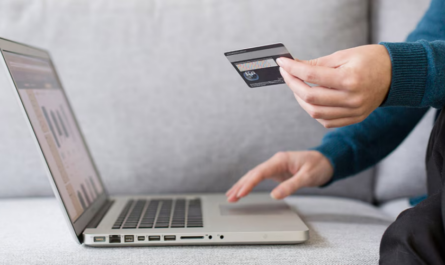With mobile banking, you can see your bank statements and make transfers from any location. It might be as easy as checking account balances and bills, transferring funds, or buying prepaid services, or as complicated as reporting fraud or investing in stocks.
To facilitate these activities, your bank may have built an app specifically for mobile banking. In fact, as long as your device has an internet connection, you can access the service throughout the day.
Banking on the Go: What Is It?
People used to do mobile banking via text, or SMS banking, before mobile online services were born. Many banks have started integrating their products through the Wireless Application Protocol (WAP), a collection of codes that connects mobile devices to the internet.
Web- and SMS-based banking were once the kings of mobile banking. But when cellphones became ubiquitous, banks began enhancing their apps with more functions and marketing them to customers.
These days, you can use your bank’s app to do much of your banking on the go. In fact, as long as your device has an internet connection, you can access the service throughout the day. The following are examples of the kinds of services offered by these apps:
- Account details, including statements and loan amounts, are accessible.
- Real-time management of investment portfolios.
- Money movement between different accounts.
- I need to know where the ATMs are located.
- The document contains the most recent offers from the institution.
- Capability to report fraud.
What financial institutions provide the option to bank using a mobile device?
Though some users are interested in more advanced capabilities, like investment portfolio management, the vast majority of banking app users are searching for the most fundamental functionality, including the ability to transfer and receive money. The majority of users also want a mobile banking app that is secure, has great customer service, and is easy to use.
Even though the majority of financial institutions now provide some kind of mobile banking, not all of them offer the same features. To get the most out of your mobile banking app, check that it allows you to do the basics like seeing account statements, sending and receiving money, paying bills, depositing checks, and contacting customer service. After that, try to find the characteristics that are more tailored to your needs.
The following banks offer useful mobile services:
The Bank of America
Use the mobile app from Capital One to do a lot of banking, like check balances and transactions, monitor your credit score, and redeem rewards points.
By configuring your account for immediate push notifications, you can easily keep tabs on your spending and payment history. And if you ever worry about losing your card, you can secure it using the Capital One app on your smartphone. Because of this security risk, no one will be able to steal from your account after you switch off your card. If you have already searched for your card and are still unable to find it, you have the option to file for fraud protection directly from the app.
Wearables like the Apple Watch can also access Capital One’s app. You can securely access your account using your fingerprint, which you can keep private.
Affinity Financial
When people talk about internet banking, Ally Bank is definitely one of the first names that comes to mind.
Their app covers the standard features of a mobile banking app, such as free money transfers, online bill payments, balance/statement inquiries, and an ATM locator.
Simple and straightforward, the Ally Bank mobile app allows customers to access their accounts by scanning their fingerprint. Using this app, you can invest in stocks from the comfort of your own home and monitor your portfolio’s success.
Additionally, you can send money to anyone with an email or cell phone number using Zelle, a service that is comparable to PayPal, and it’s free when you use the Ally mobile banking app. As a result, you can avoid disclosing your sensitive financial data to potential business associates.
National Bank of America
Bank of America deserves a place on this list
The app lets you do a lot more than just check your balance, read mini-statements, and move checks to other accounts. It also enables you to activate your card or get a replacement if it becomes lost or stolen.
Beyond that, the bank will get in touch with you to confirm the transaction before they approve it if they see any questionable behavior on your account. Notifying the bank within 60 days of the activity disqualifies you from liability for fraudulent transactions.
We are weighing the benefits and drawbacks of these services. Just like any other banking platform, mobile banking has its pros and cons. A few advantages are:
- Making a trip to the bank is no longer a hassle.
- Superb support for clients.
- Saving money.
- I am ready to assist at any time, day or night.
Weaknesses to consider are:
Because of the prevalence of online storage of sensitive data, those looking to steal it have an advantage.
There will be a brief pause in service as we upgrade our systems.
There may be fees associated with data or website use.
Does it lock down?
With a few exceptions, yes, it is safe. Although the majority of people will probably never have to deal with online dangers, unfortunate souls nonetheless will. Mobile banking is a safe and secure way to transact—all it takes is being aware of the hazards and practicing safe internet banking to drastically lower the threat.
Scammers can easily gain access to mobile banking users’ accounts by sending false notifications that trick them into inputting or publishing their banking information illegally.
While using a mobile app to access your bank account, it is crucial to always exercise caution. Avoid using weak passwords, using public Wi-Fi, and visiting suspicious websites at all costs. Implementing all of these measures can reduce the likelihood of cyberattacks.
Mobile Banking: What Are Your Options?
Mobile banking offers an astounding array of options. On a daily basis, all users benefit from the most fundamental services, which include checking balances and statements, transferring funds, and getting checks deposited. Modern tools such as investment portfolio management, account opening and closing, and loan applications simplify the more complex aspects of banking.
Customers no longer have to make frequent trips to the bank’s physical location to complete these fundamental tasks, which in turn reduces the bank’s transaction processing costs.
The option to cancel cards in the event of loss or fraud is a handy feature of mobile banking solutions. Both the bank and its customers would have fewer problems if they could report and handle fraudulent actions, lost cards, or incorrect charges soon.


